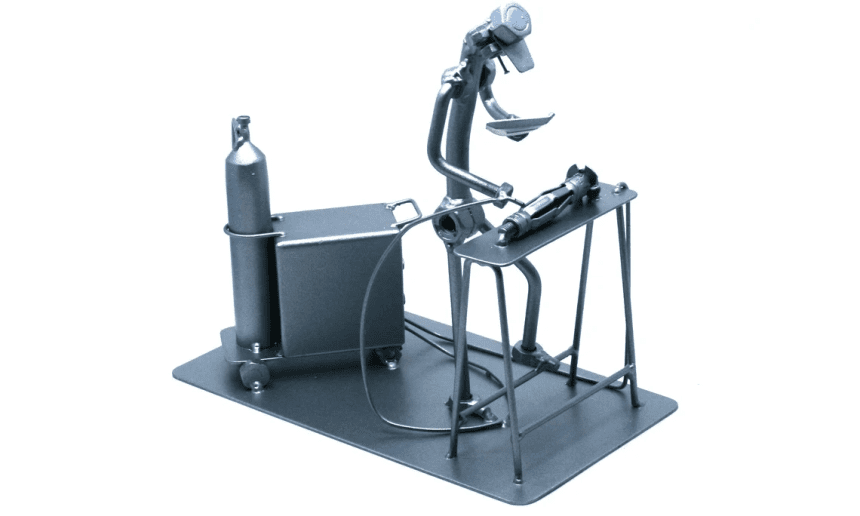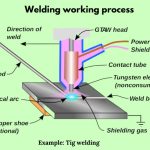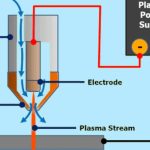One of the foundational pieces of knowledge required to be a competent welder is understanding welding metals. Each metal and metal alloy reacts to heat differently and can be worked differently. When heated, metals expand and become softer, producing a variety of uses and applications. Additionally, they react differently to the various welding methods that are employed.
Different Types Of Welding Metals
021208.com
Review the details of each metal in the list below.
FACTORS TO CONSIDER WHILE CHOOSING A METAL FOR WELDING
When choosing a metal for welding, there are many factors to consider. This comprises:
- Melting level
- The metal’s ductility, or how it responds to bending and stretching
- What metal can be used depends on its electrical conductivity.
- Strength: Metal breaking point.
7 BEST METALS FOR WELDING
1. STEEL
Steel’s strength is well known to all. It is an alloy with 2% additional elements and iron. Alloys made of carbon and steel are widespread and come in high, low, and medium grades. Carbon-rich steel is stronger. Steel is a flexible material that may be welded using any method. It is necessary to clean the area around the welding. On the downside, oxidation can cause it to corrode and flake.
2. STAINLESS STEEL
Unlike regular steel, stainless resists corrosion. This is accomplished via chromium additions of 10% to 30% to other elements. Nickel alloys are available. To weld stainless steel, arc welding is used (TIG, MIG, or Stick). However, the higher price is a drawback.
3. ALUMINUM
Aluminum is less corrosive than other metals, similar to stainless steel. Compared to stainless steel, it is lighter. Aluminum alloys and pure aluminum are used in welding.
Alloys consist of:
- Aluminum/copper alloy
- Manganese alloy
- Zinc alloy
The preferred method for welding aluminum is TIG welding (GTAW). In addition, GMAW and other welding techniques are employed (gas metal arc welding or Mig). Stick welding is only used for modest jobs. Choosing a base metal joint design is the first step in the procedure (tee, lap, edge, corner, or butt).
4. COPPER
Due to its electrical conductivity, thermal conductivity, corrosion resistance, aesthetics, and wear resistance, copper is a common welding metal. 99.3% minimum copper content is required for something to be called copper. Welding techniques include soldering, brazing, and welding. There are various kinds of copper alloys, including:
- Copper-nickel-zinc (called nickel silver)
- Copper-nickel
- Copper-silicon (named silicon bronze)
- Aluminum-copper alloy (aluminum bronze)
- Copper-tin
- Copper-zinc (also known as brass)
- High copper alloys (up to 5% alloy)
Gas Metal Arc Welding and Gas Tungsten Arc Welding are used to weld copper. Manual metal arc welding is a technique employed by some welders. However, it can produce subpar work. The joint designs for welding copper are wider than those advised for steel. Welding-grade argon is used as copper’s shielding gas. A wire bronze brush is used to clean and degrease the weld locations. After welding, any formed oxides need to be cleaned up.
Learn More about different types of welding metals that are commonly used in welding projects so you can better understand the options available to you.
021208.com
Although copper is preheated, copper alloys do not require preheating because of their excellent thermal conductivity.
5. CAST IRON
Low-carbon steel is simpler to weld than cast iron when it comes to metals. Cast iron is less ductile and contains more silicon and carbon. To get rid of any embedded grease and oil before welding cast iron, clean the surface. It is necessary to file or grind all cracks. Oxyacetylene welding is used to join cast iron pieces.
6. NICKEL ALLOYS
There are various alloys available for nickel welding metals. These consist of the following:
- NICKEL ALLOY 141 – To weld the case and pure nickel parts, use nickel alloy 141. (nickel 200 and 201). Nickel and steel are also incorporated into it.
- NICKEL ALLOY 61 – Similar to above
- NICKEL-COPPER ALLOY 190 – Used for welding to or to another substance.
- NICKEL-COPPER ALLOY 60 – used for internal welding.
7. MAGNESIUM
Magnesium alloys are easy to cast, lightweight (about two-thirds the weight of aluminum), and vibration-absorbing. It can be welded with aluminum and has a melting temperature close to that metal. Be aware that the shavings produced during the grinding process are combustible (do not use water to put out any flames). A TIG welder is used to join the metal











